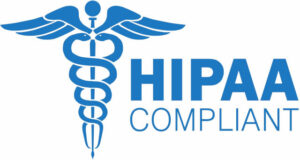Remote monitoring is often avoided because it is felt that with the addition of remote monitoring, it will completely overburden staff. Remote monitoring can be a source of data overload that can create more work to sort through. Triage of remote alerts can be time consuming and an unpredictable workload on a daily basis.
With increasing clinic size, it is virtually impossible to see all patients in the office on a regular basis. Clinic schedules are often consumed with routine follow-ups that could be done remotely.With the increased complexity and number of devices, clinics are responsible for managing data on multiple sites including Medtronic Carelink, Boston Scientific Latitude, Biotronik, and Abbott Laboratories (St. Jude) Merlin. Several complex data management steps are involved in the process. This includes downloading data from multiple sites, generating reports, reviewing reports, and transferring the reports into hospital EMR systems such as EPIC, Allscripts, and Cerner.
Difficult to find and employ CIED trained, experienced and CCDS staff. The tasks of remote monitoring have traditionally been integrated into a clinician’s already full clinic schedule. Inability to dedicate a staff member exclusively to remote monitoring to maintain the efficiency and quality of remote monitoring. Additional resources required to coordinate a remote monitoring program put additional strain on office and administrative workflow.
Remote monitoring CPT codes such as 93294, 93295, 93296, 93297, 93298 and 93299 are all associated with remote monitoring device patients. Most clinics struggle with maximizing the billing and reimbursement potential, leading to revenue losses. Software solutions are associated with large upfront costs and ongoing subscription fees. Clinics that already invested in a software solution, such as Paceart can find it unreasonable to invest in a different solution or service.
The Standard of Care
Research shows that complementing remote cardiac device patient interrogation with in-person device checks enables healthcare providers to provide a better standard of care to their patients.
Remote monitoring allows the physician to implement an improved strategy and care plan based on review of the patient’s in clinic visits and remote interrogations. While remote monitoring is crucial to a successful delivery of care, hospitals and device clinics have several challenges while monitoring their cardiac patients who have pacemakers, ICDs and ILRs (loop recorders). These challenges are related to workflow, staffing, patient volume and capturing reimbursement potential. Overburdening of the clinics may sometimes lead to backlogs, which further leads to challenges in ensuring quality patient care.
Alert Management
Advancements in remote monitoring technologies have enabled cardiac devices to seamlessly transmit critical data to health care providers.
Remote monitoring alerts practitioners to changes in lead or device function that would otherwise go undetected until the next scheduled in-person or remote interrogation. Remote alert management is able to detect device failure and alert clinicians to possible human programming errors such as the failure to activate tachyarrhythmia therapies. Remote interrogation and alert management technologies complement routine follow-up appointments, while maintaining an in-person evaluation schedule. Studies demonstrate that well-planned remote monitoring and interrogation helps achieve follow-up goals and improve device clinic workflow efficiency.
Better Patient Care
Patients report high satisfaction and acceptance of remote monitoring technology. Clinicians find the data reliable for evaluating device function and detecting arrhythmias while reducing the frequency of in-person evaluations.
Various studies have explored the ability of remote monitoring to detect problems early, thereby improving patient outcomes. Research demonstrates that incorporating remote monitoring into follow-up practice ensures greater patient retention and improves adherence to scheduled patient evaluations. These studies form the basis for the HRS’ recommendation that remote monitoring is the standard of care for patients with CIEDs (including pacemakers, ICDs and loop recorders), with alert-driven follow ups replacing most routine in-person interrogations.







